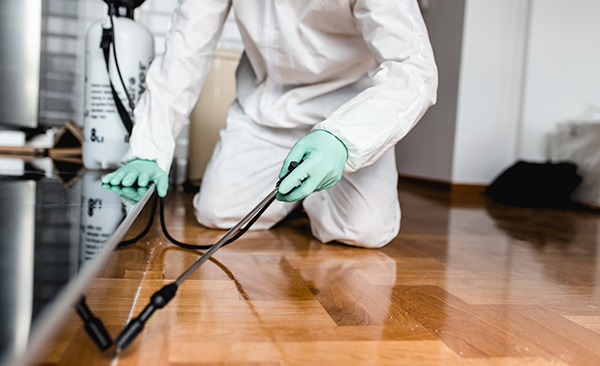Discovering Infestation and Treatment Strategies on the planet of Bug Control
The landscape of parasite control incorporates a myriad of obstacles, especially as invasions of common house parasites proceed to evolve. By integrating preventative procedures with sophisticated monitoring techniques, such as Integrated Insect Management (IPM), home owners can much better protect their atmospheres.

Usual Household Pests
When it involves handling our space, understanding typical home insects is essential. These parasites not just interrupt our comfort yet can also posture health dangers and damage building. The most common home pests consist of ants, cockroaches, rats, termites, and bed pests.
Ants, typically seen foraging in kitchens, can contaminate food and establish large nests. Rodents, including computer mice and rats, can cause architectural damages and carry diseases like hantavirus and salmonella.
Identifying the indicators of these pests, such as droppings, nests, or bite marks, is crucial for early intervention (Pest Control Lockhart). Appropriate hygiene practices, sealing entrance factors, and keeping a clutter-free environment are effective preventative measures. By identifying these usual house pests and understanding their behaviors, property owners can take aggressive steps to reduce problems, ensuring a healthier living environment
Comprehending Parasite Infestations
Pest invasions can intensify swiftly, turning a minor nuisance into a considerable trouble if not addressed without delay. Recognizing the nature of these infestations is important for reliable monitoring. Pests can invade property and business spaces for various factors, consisting of the search for food, shelter, or reproducing premises. Usual elements adding to problems consist of inadequate cleanliness, architectural vulnerabilities, and seasonal adjustments that drive insects inside your home.
Recognizing the type of insect is essential, as different types exhibit diverse behaviors and reproductive prices. For circumstances, rodents might establish nests in hidden locations while bugs like cockroaches grow in wet environments. Early discovery often pivots on recognizing signs such as droppings, nibble marks, or unusual sounds, which can show a problem prior to it becomes extreme.
Cozy, damp climates can facilitate the rapid growth of parasite populaces, while changes in landscaping or building and construction can inadvertently produce conducive atmospheres. An informed technique to recognizing these dynamics lays the foundation for effective pest monitoring approaches in the future.
Treatment Techniques and Methods
Effective treatment techniques and techniques are vital for minimizing insect invasions and recovering a safe atmosphere. A diverse approach is usually best, integrating chemical, biological, and mechanical approaches customized to the details insect and the intensity of the problem.
Chemical treatments consist of the use of pesticides great site and herbicides, which can properly eliminate parasites. However, proper application and adherence to safety guidelines are essential to minimize risks to humans and non-target organisms. Integrated Pest Administration (IPM) encourages the cautious use chemicals as a last hope, relying rather on monitoring and limit degrees to establish intervention needs.
Organic control approaches include introducing natural killers or parasites to lower parasite populations. This technique is increasingly popular, specifically in agricultural settings, as it promotes environmental sustainability.
Mechanical approaches, such as traps and barriers, offer instant remedy for bugs without presenting chemicals. Alternatives include sticky traps for insects or physical obstacles for rodents.
Inevitably, the option of therapy method ought to consider the details parasite, the environment, and potential effect on human wellness and environments. A well balanced mix of these strategies can effectively manage problems while promoting lasting insect control services.
Precautionary Steps for Homes
Proactively dealing with bug problems prior to they rise is essential for preserving a healthy and balanced home environment (Pest Control Lockhart). Implementing efficient preventive actions can significantly decrease the possibility of infestations, ultimately safeguarding both your property and health

Correct landscape design likewise plays a crucial function in prevention. Keeping shrubs and Read Full Report trees cut away from your house decreases the possibilities of pests discovering their method inside. Ensure that drain systems are functioning successfully to avoid standing water, which can draw in mosquitoes and other bugs.
Last but not least, routine assessments are suggested. Regularly examining for indications of parasite activity enables very early intervention. By taking on these safety nets, home owners can develop a setting that is much less friendly to insects, thereby enhancing their overall lifestyle and lowering the requirement for extensive pest control interventions.
Business Parasite Control Strategies
A thorough technique to business bug control is essential for services intending to keep a secure and hygienic atmosphere. Efficient approaches entail a mix of normal assessments, staff member training, and the execution of Integrated Pest Administration (IPM) techniques.
Routine examinations enable early detection of parasite activity, enabling prompt treatment. Services need to establish a routine timetable for these evaluations, concentrating on high-risk locations such as kitchens, storage rooms, and garbage disposal sites. Staff member training is similarly crucial; staff ought to be informed on the signs of insect invasions and the importance of reporting them immediately.
Executing IPM techniques helps mitigate parasite concerns sustainably. This consists of habitat alteration, such as sealing entrance points and lowering mess, in addition to employing natural deterrents before turning to chemical therapies.

In addition, teaming up with a certified parasite control provider makes sure access to specialist understanding and sophisticated therapy options. This partnership can result in tailored bug control intends tailored to the certain demands of the service, minimizing dangers and improving overall efficiency. Ultimately, a proactive and informed technique promotes a pest-free environment, safeguarding both public health and organization track record.
Final Thought
In conclusion, reliable pest control requires a comprehensive understanding of common home insects and their actions, combined with targeted therapy methods. Implementing precautionary actions along with treatment methods such as Integrated Bug Administration and organic control improves the capability to mitigate invasions.